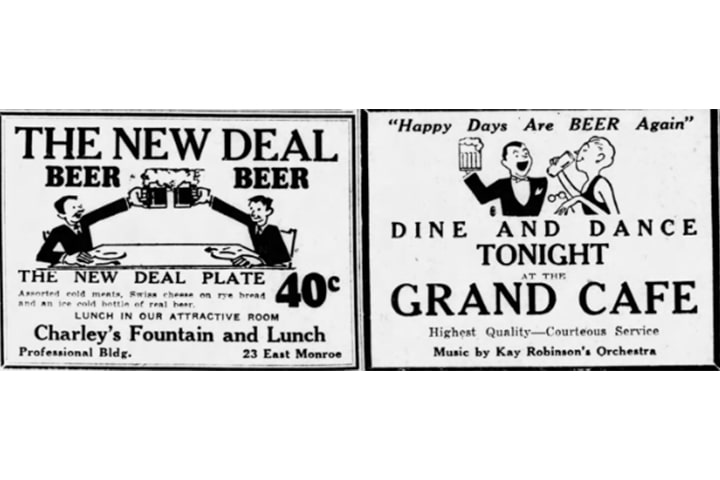Beer helped create jobs during the Great Depression
Professor Jason Taylor publishes six papers on the legalization of beer prior to the end of Prohibition.
Professor Jason Taylor, the Jerry and Felicia Campbell Professor of Economics at CMU, is currently studying several economic aspects related to the end of Prohibition in 1933. Taylor has published multiple papers on the topic, such as the speed of the entrepreneurial response to relegalization, the number of jobs it created, and a comparison of the location of breweries before and after Prohibition ended.
While studying the factors driving recovery from the Great Depression, Taylor came across an article from May 1933 suggesting the legalization of beer may have been a contributing factor to the economic turnaround during the time. While Prohibition did not end until December 1933, in April 1933, the definition of “intoxicating” beverages was changed to allow for the production, sale, and consumption of beer up to 3.2% alcohol. Beer legalization is an understudied aspect of President Franklin Roosevelt’s “New Deal” economic measures designed to promote employment as the unemployment rate at that time was 25%.

Taylor found no scholarly research addressing this policy change in depth. Since 2017 Taylor has published six papers on the aspects of beer legalization prior to the end of Prohibition. For example, one of his studies, published in Explorations in Economic History, estimated that legalization created around 60,000 jobs in April 1933 and created over 100,000 jobs over the next few months.
Another of his papers, published in Business History, examines the speed with which breweries entered after relegalization in 1933. Using information from historical newspaper searches, Taylor estimates that around 200 breweries were selling on April 7, and by the end of the year, 607 were in business.
His research also examined factors that contributed to the longevity of breweries that opened in 1933. Taylor found that breweries that began legal sales more quickly within 1933 survived longer than those that opened later. Larger breweries were also more likely to survive longer than smaller breweries.
His most recent paper examined the geographic location of the 600 breweries that were selling in 1933 compared to the location of 1,500 breweries just prior to the start of Prohibition. Taylor finds that the relative geographic distribution of breweries was largely unchanged from the immediate pre-Prohibition era.
Taylor plans to use his sabbatical in the spring of 2024 to write a book that brings together and expands upon his published papers. The book is tentatively titled “A Good Time for Beer: The Economics of Beer Legalization in 1933 Prior to Prohibition’s Repeal.”
This story is brought to you by the Office of Research and Graduate Studies.




